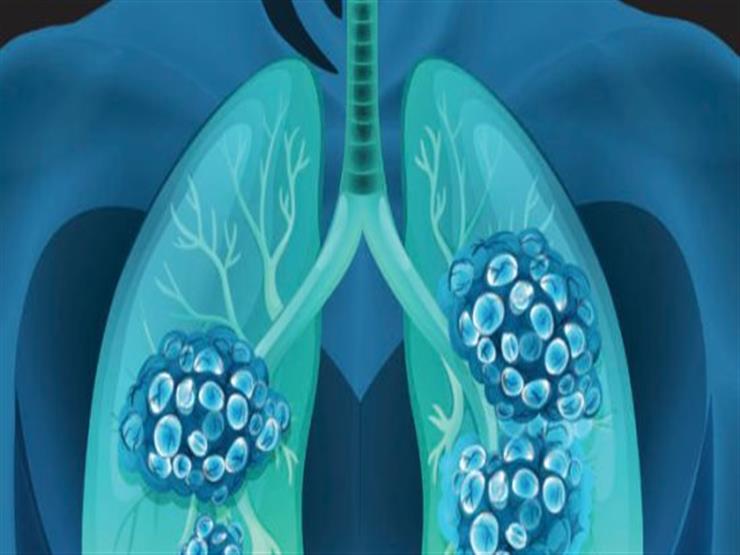6:00 pm
Tuesday 05 January 2021
–
I wrote – Hind Khalifa
Pneumonia is one of the common complications of infection with the Coronavirus, and it is an indication of the extent to which the virus battle has shifted from mild to severe, and it is a similar symptom to an infection that may infect the lungs caused by viruses, bacteria and fungi, and Masrawy highlights how to identify a person with pneumonia caused by Corona, For other people with the same symptoms for other viral reasons, according to the “thehealthsit” site.
A classic symptom by which you can recognize ordinary pneumonia
Patients with pneumonia usually complain of coughing with green or yellow sputum, and sometimes the phlegm is rust-colored or has clear blood, so coughing in the elderly that does not cure can be one of the main symptoms of pneumonia, and there are some types of pneumonia that It causes mucus to build up in the lungs.
There are some early signs and symptoms of this disease, namely:
fever
Most people with this condition have a sudden fever, however, this fever is not very common among the elderly, but having a fever every now and then can be a sign that the person has a serious health problem.
Shortness of breath
The air sacs in the lungs can fill with fluid or pus. If a person suffers from this condition, it causes coughing but also difficulty breathing, and this will be especially noticed when a person needs to move quickly, for example, trying to rush to answer the phone or climb stairs. .
Chest pain
Infection in the lungs can cause chest pain in the elderly during coughing and breathing. This pain is chronic and can be very painful. When a person feels chest pain while coughing and breathing, he should consult a doctor and examine himself.
Serious complications if the condition is left untreated
Pneumonia can usually be treated successfully without causing complications, however, complications can develop in some patients, especially in high-risk groups.
Fluid or pus (also called an effusion) can build up between the covering of the lungs (the pleura) and the inner lining of the chest wall. This is called a pleural effusion (or empyema in the case of pus), and a chest tube (or less common surgery) may be needed to drain the fluid or pus.
Pus may collect in the area of the lung affected by pneumonia (also known as an abscess), and this rarely requires surgery, and bacteria can spread to the bloodstream and other organs, and this is a serious complication because infection can cause dangerously low blood pressure.
Although most people recover from pneumonia, it can be fatal in some cases. Approximately 5 to 10 percent of patients admitted to a general medical ward, approximately 30 percent of infected patients can die. Severe infection in the intensive care unit.
The relationship between corona virus and pneumonia
SARS-CoV-2 infection begins when the respiratory droplets that contain the virus enter the person’s body through the upper respiratory tract, as the virus multiplies, and the infection can progress to the lungs and can increase the spread of infection during this time, becoming the chances of infection with pneumonia. High and thus can lead to COVID-19 pneumonia.
This happens as oxygen that is inhaled passes into the lungs and the bloodstream inside the alveoli, which are the small air sacs in the lungs. However, infection with SARS-CoV-2 can damage the alveoli and surrounding tissues.
Moreover, as the immune system fights the virus, inflammation can cause fluid and dead cells to build up in the lungs, and these factors interfere with the transport of oxygen, resulting in symptoms such as severe coughing and severe shortness of breath.
According to studies, people with COVID-19 pneumonia can also develop other diseases such as acute respiratory distress syndrome (ARDS), which is a progressive type of respiratory failure that occurs when the air sacs in the lungs fill with fluid. This can make it difficult for a person to breathe and thus. It leads to shortness of breath.
How is COVID-19 pneumonia different from regular pneumonia?
Symptoms of COVID-19 pneumonia may be similar to other types of viral pneumonia, however most people who contract COVID-19 experience mild or moderate symptoms such as coughing, fever, and shortness of breath, but some people with the new coronavirus develop severe pneumonia in Both lungs, and COVID-19 pneumonia is a serious illness that can be fatal.
The researchers found that people with COVID-19 pneumonia were more likely to have:
1. Pneumonia that affects both lungs instead of just one.
2. Lungs with a “vitreous” appearance, distinguished by a CT scan.
3. Abnormalities in some laboratory tests, especially those that assess liver function.
Who are at risk of developing COVID-19 pneumonia?
Some people are more susceptible to developing COVID-19 pneumonia, and it depends on the individual’s health conditions. 8 Some other risk factors include:
Age
Older adults or adults over the age of 65 are at an increased risk of developing serious illness from COVID-19.
Underlying health complications
An individual who suffers from other health complications such as – asthma, diabetes, liver disease, obesity, and kidney disease is more likely to develop COVID-19 pneumonia.
Weak immune system
The most important risk factor is a weakened immune system, immunodeficiency can increase the risk of the dangerous COVID-19 pneumonia.
– .


